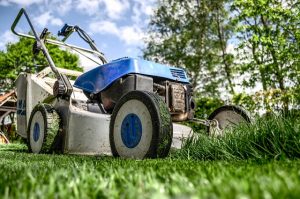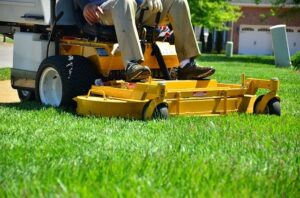7 Great Gardening Tips

A garden is a nice and high preferred location where you can spend your evening or summer days with your family members. The main benefit of having a garden is that it will enhance the overall beauty of your house. Apart from that, it also brings you a comfortable place to get rid of your work tension and stress. If you want to make your garden safe and more beautiful, you can follow the best gardening tips.
The useful guidelines help you to water and feed your plants properly.
Choose a perfect location and plant
Choosing the perfect spot for your garden is like orchestrating a symphony of natural elements. Begin by scouting a location that basks in sunlight, providing a radiant stage for your plants to perform their botanical ballet.
Test the soil – the very soil where your garden’s story will unfold – for its composition and nutrient richness. Seek a place that beckons accessibility, allowing you to waltz through your green haven with ease, whether you’re planting, tending, or simply admiring the floral performance.
Make sure your chosen spot is harmonious with a water source nearby, ensuring your plants stay hydrated and happy.
Shield your garden from the gusty whims of the wind, offering a sheltered haven for delicate petals.
Understand the climate, the atmospheric melody your garden will dance to, and consider the choreography of space, giving each plant ample room to pirouette into its mature form.
Test the soil
When you decide to create a healthy and attractive garden, you need to test the soil. The proper examination helps you to know the nutrient and pH level of the garden soil. To test the soil, you can send a soil sample to the local nursery. The result of a soil sample will show the accurate level of alkaline and acidic present in the soil. It also helps you to know the resource that affects the nutrient absorption capacity of your plants.
In fact, each variety of plants grows well at various pH levels, so you can utilize this test to choose the right kind of plant ideal for your yard soil.
Along with this, you can also check the texture of your garden soil. The soil needs to crumble and shovelled in your hands. If the soil is clay-like or super hard, it is complex for many plants to properly grow their roots into it. Most significantly, you can add fresh compost, soil and mulch to aerate the area before planting.
Follow the direct light
Sunlight plays a major role in the growth of a plant, so you can pay more attention to it. Some of the edible plants that include herbs, fruits and vegetable need at least six hours of sunlight to thrive well.
For indoor plants, position them near windows that receive ample sunlight, preferably facing south or west, as these directions generally provide the strongest and most direct light. Rotate potted plants regularly to ensure all sides receive equal sunlight, promoting balanced growth. Keep an eye on the changing seasons and adjust the placement of indoor plants accordingly to account for variations in sunlight intensity.
In outdoor gardening, take note of the sun’s path throughout the day and plan your garden layout to maximize direct sunlight exposure for sun-loving plants. Place taller plants on the north side of shorter ones to prevent shading. Regularly monitor and trim surrounding vegetation to prevent shading as well.
It’s important to recognize that not all plants have the same light requirements. Some plants thrive in full sun, while others prefer partial shade. Therefore, understanding the specific needs of each plant in your garden will help you arrange them optimally to follow the direct light they require.
Water your plant regularly
It is one of the most essential resources, so you should water the plants regularly. To simplify the watering process, you can place your garden close to the water source. You can also ensure that you can have a long hose for your garden site. If you are watering your plants regularly, it will make your garden look green and healthy.
Opt for containers
If you have a limited space for creating a garden, you can utilize the containers. There are many plants grow in pots that includes shrubs, fruit trees, berries, herbs, and vegetables. You can try to choose the pots which are sufficient for your plants. You can use the gardening pots which are designed to protect the plants against both under watering and over watering.
Regularly feed your plants
If the plants get enough nutrition, they will look good. Hence, you need to feed your plants with natural or organic foods. These are lots of natural resources available, so you can choose and use the best one for feeding your garden.
Keep your garden safe
Garden is not only a place for various plants but also appears as a home to other insects. When it comes to bumble bees, they are fuzzy and buzzing insects which are well-known for their cute appearance. It is essential to know that these bees can deliver their powerful stings several times. Choosing the exterminator is a wise option when you do not like to get into the risk of getting stung. Only the professional exterminator could come in for treating the nest. There are many numbers of Treatments are available to eradicate the bees from the areas.
Over the course, bees are dead so that it would be much more efficient to make the garden to look more beautiful. Exterminators also do not remove nests or the dead bees so that you do not need to take care of the tasks in much more efficient manner. When you deal with the infestation of bumble bees, you can look for the best ways to get rid of bumble bees. It is because the increasing population of bumble bees is dangerous to your family, so you can take proper care while removing them.
Here are few common ways to remove bumble bees as follow:
Use spicy spray made of peppermint
Most of the insects hate peppermint and cinnamon. You can combine these two ingredients to prepare a powerful repellent and spicy spray. It will surely keep the insects out of the garden space.
Contact a beekeeper
Are you looking for a safe way to remove bumble bees from your garden? A beekeeper is a right choice for your needs. They are the professionals who know the best way to remove the bees from the garden without killing their best. Get the details about the way of solving the problem then you could easily solve them in future without any hassle.
Utilize the best insecticides
When the bumble bees are turning into a danger or nuisance to your children, you can utilize the right kind of insecticides. It is helpful to choose and use the insecticides which are formulated especially for removing bees. You can choose the right time to apply the insecticides. It is always safe to spray the insecticides during night time. Even though Bumblebees are not quite aggressive when compared to other types of bees so you could build nests on places so that humans are not active. When the family members have any kind of allergies or nest proving the nuisance then choosing the exterminator or calling the beekeeper would be a great option.






